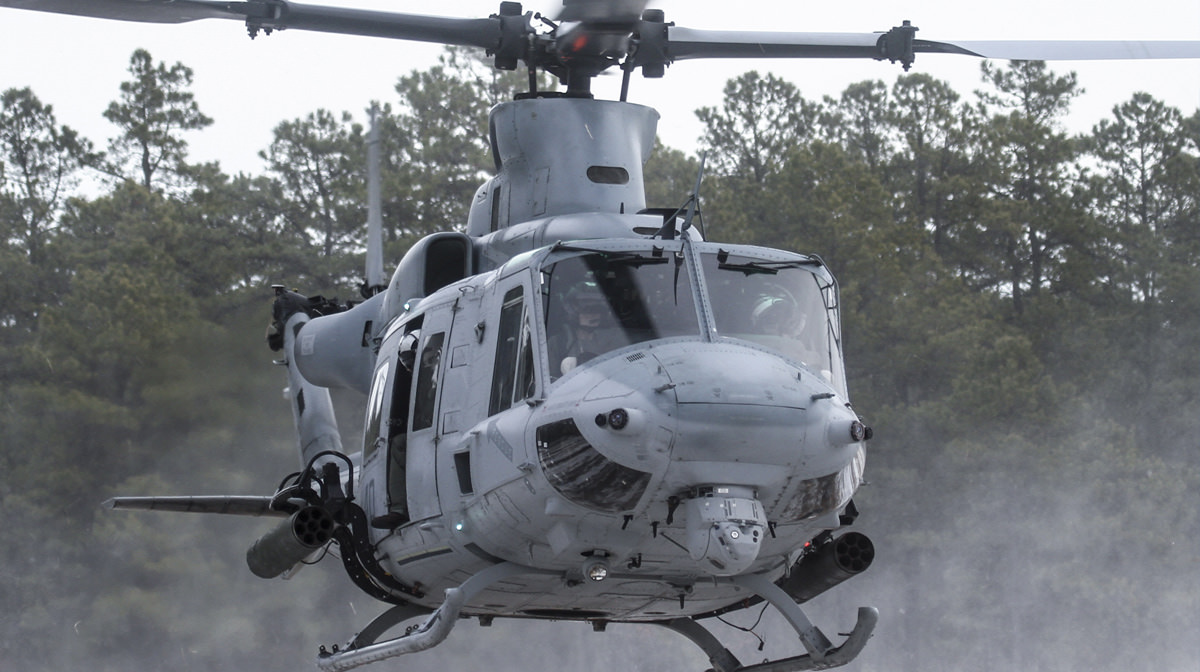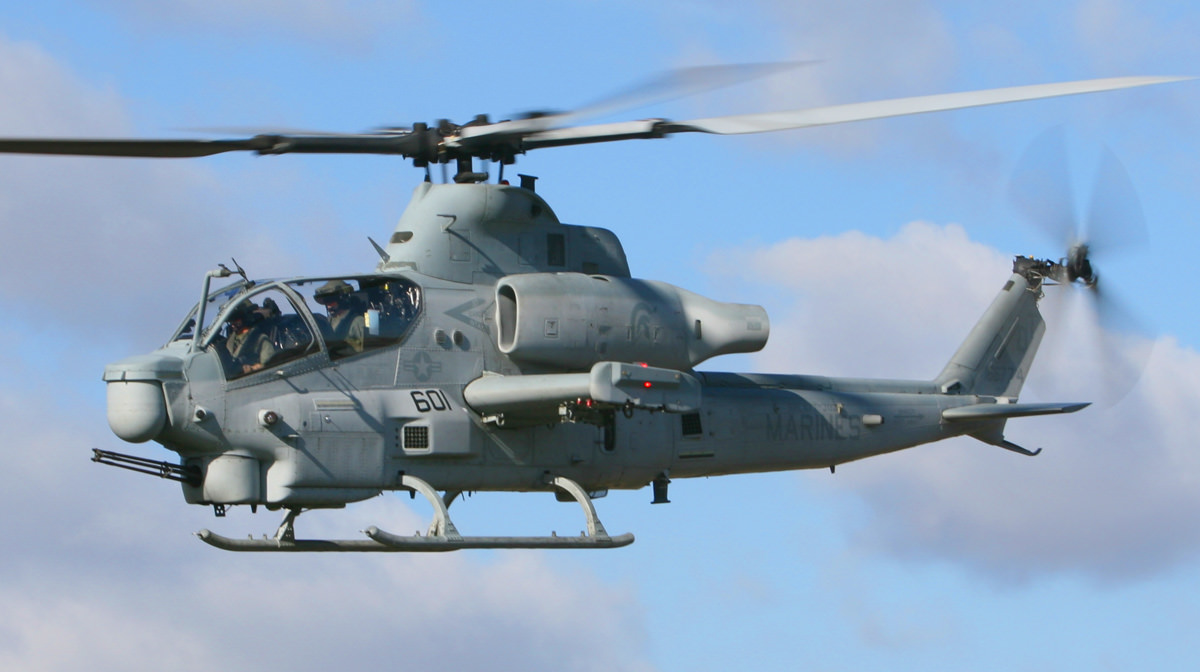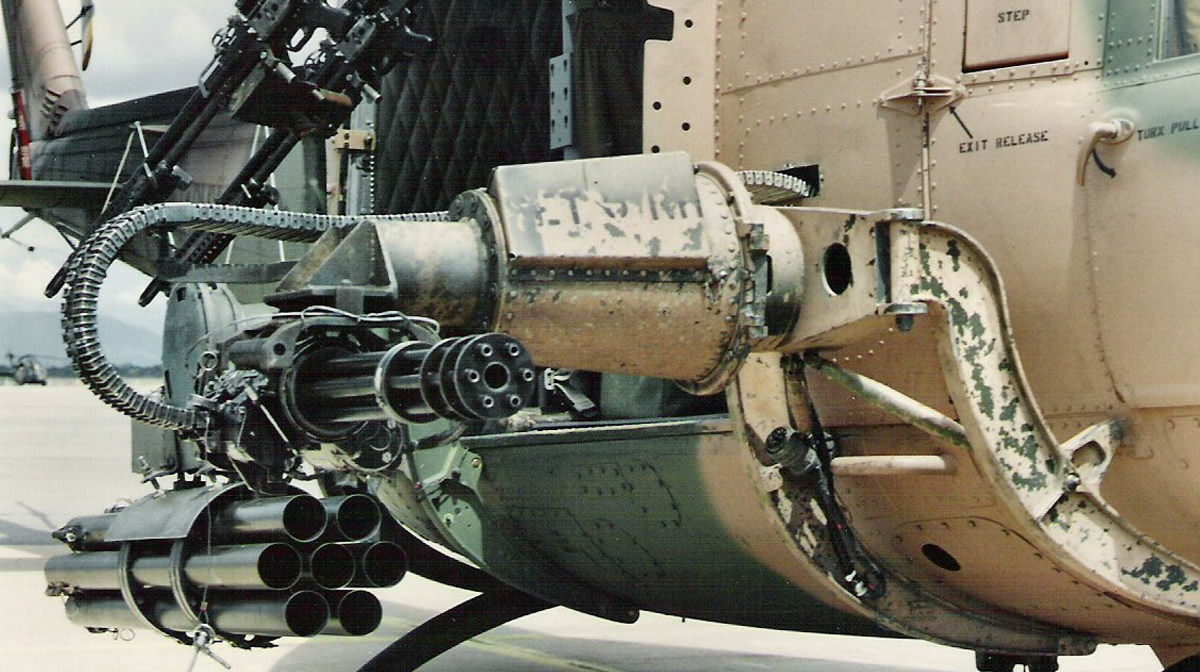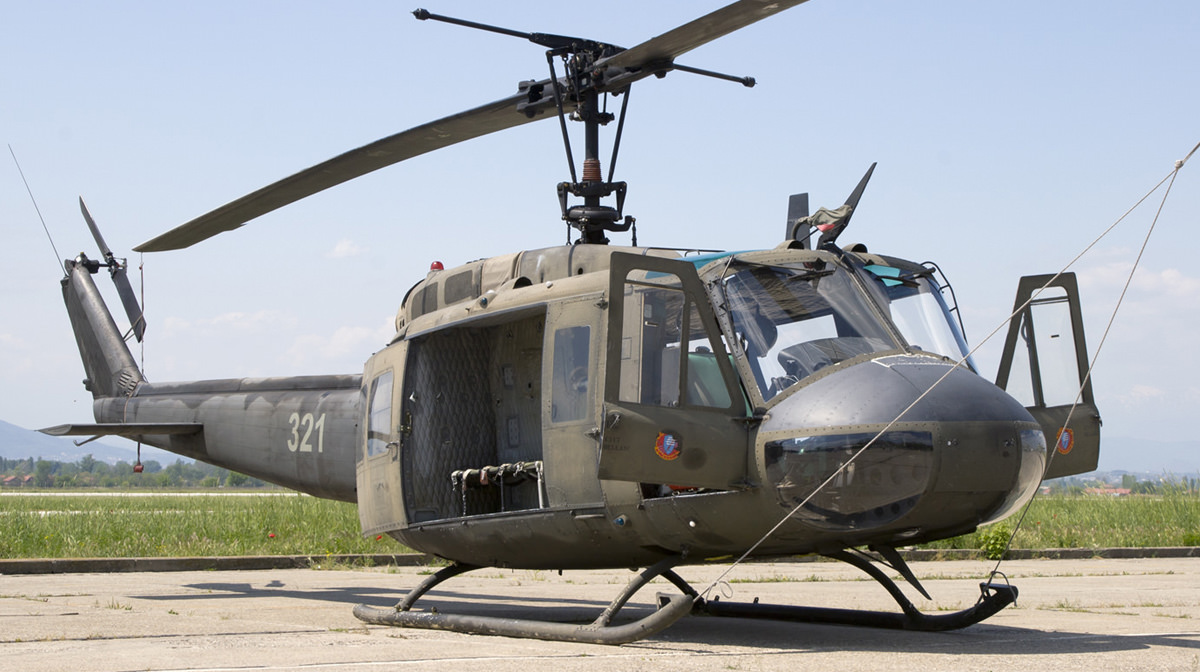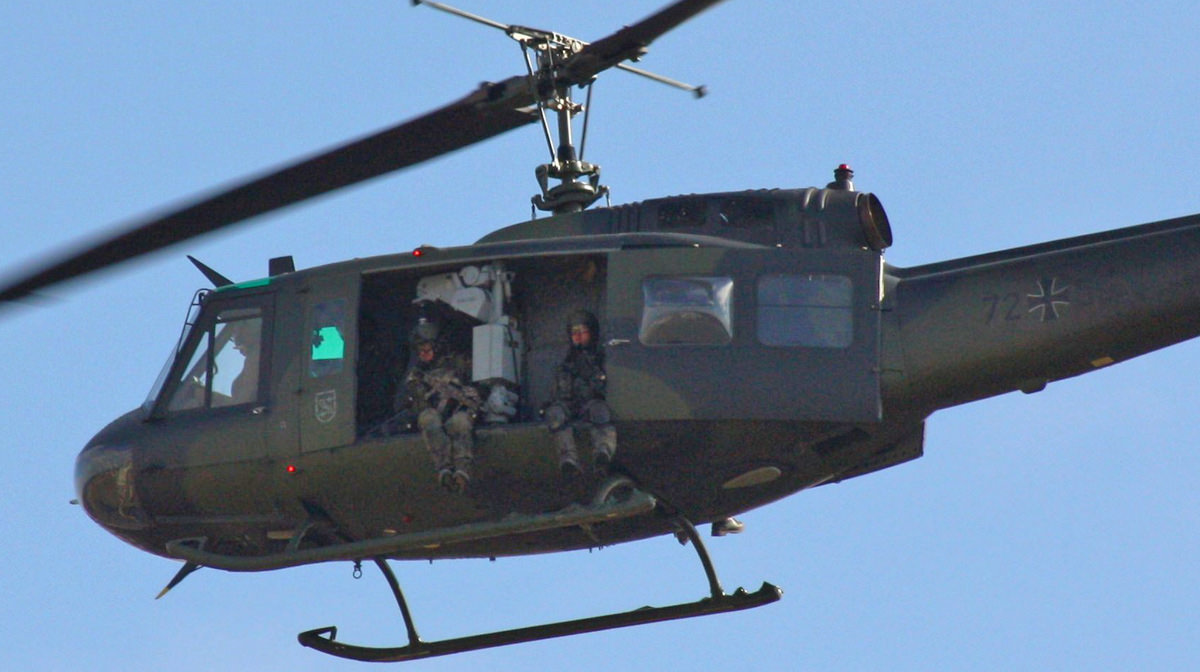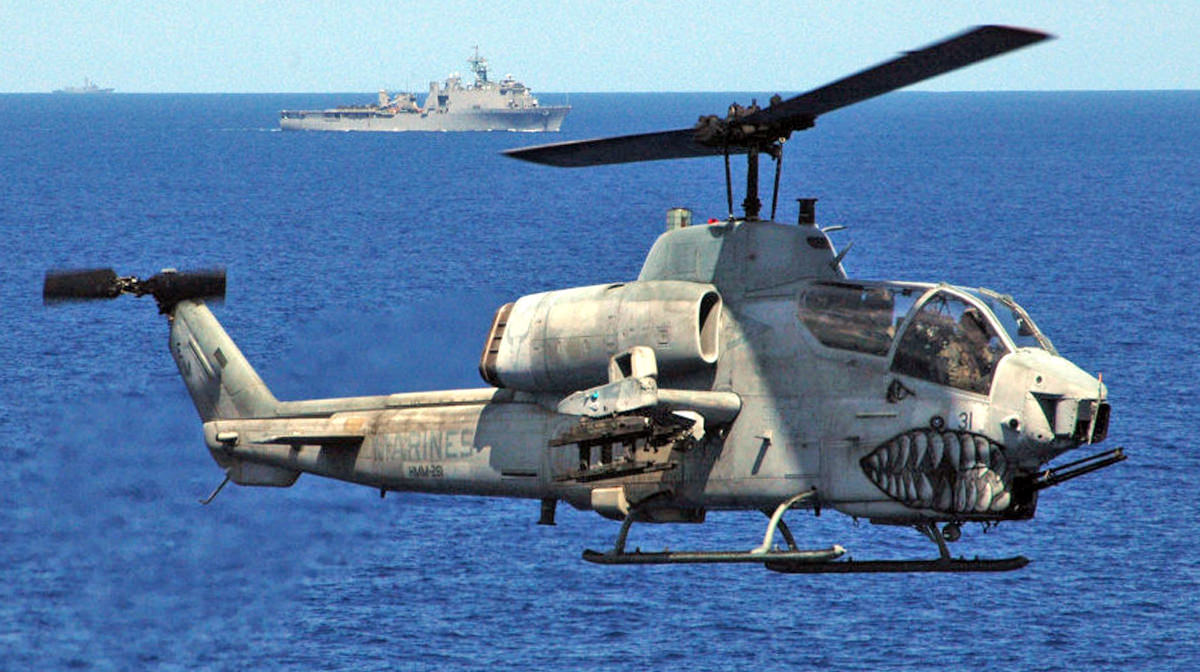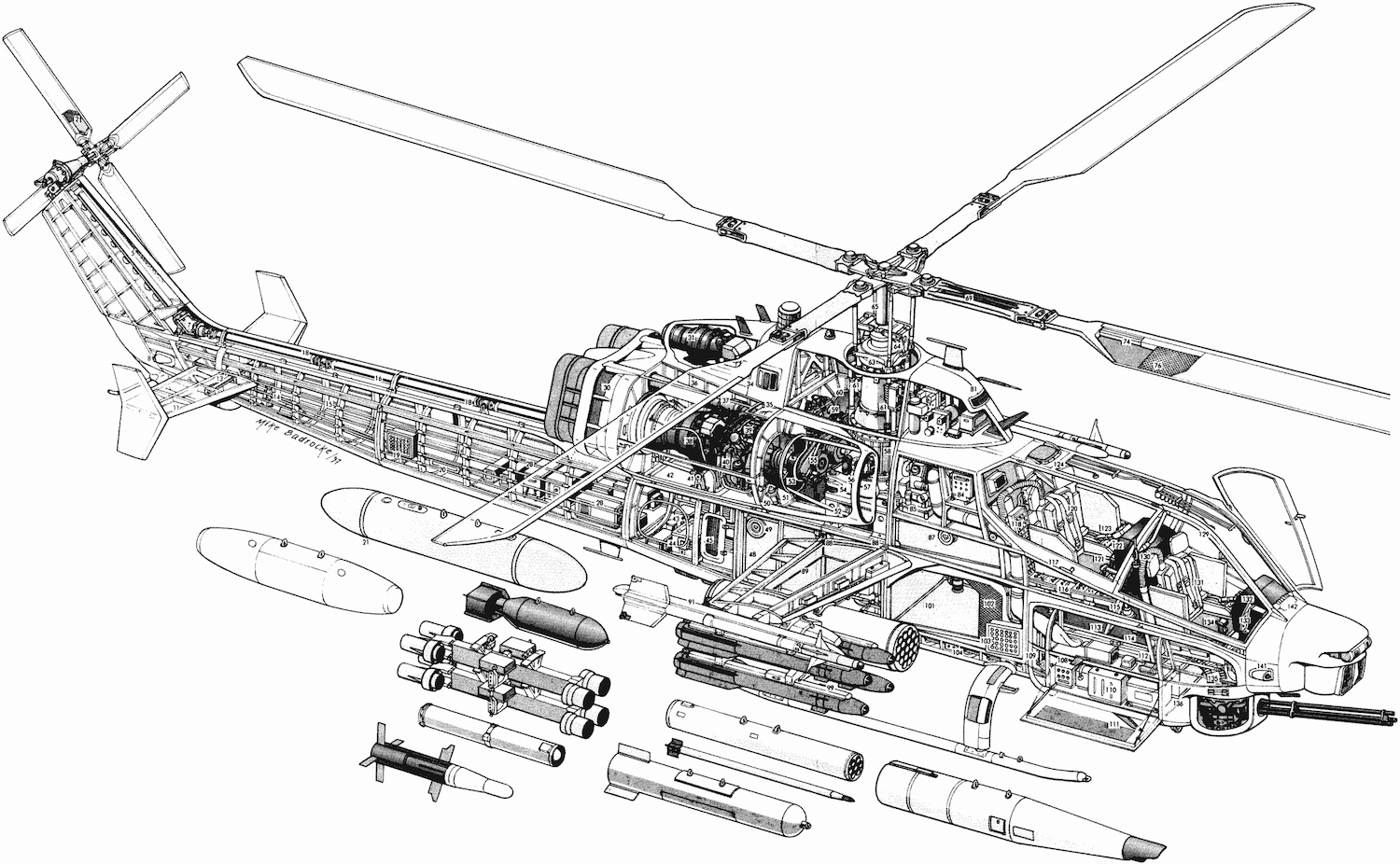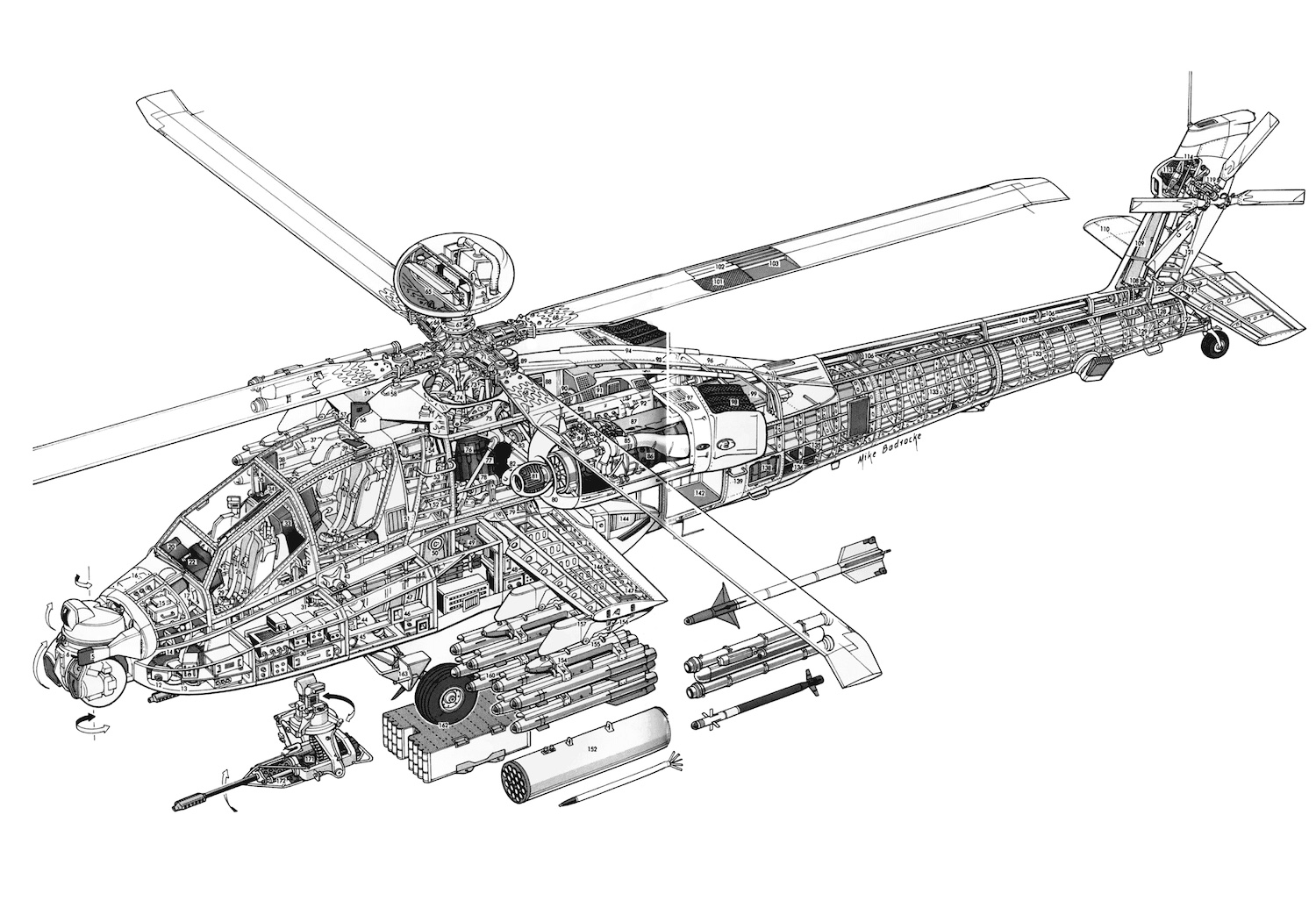Price: $49.95
- 3 magazines, 20 manuals, & photos
- PDF contains 9,744 pages
- Content is keyword searchable
- Print a personal copy
- Pay via PayPal or Credit Card
- International orders welcome!
- Download files upon payment
November 1979
- Assault Helicopters in Vietnam
- F2H Banshee
- Great Lakes – Goodbye to the Biplane Bombers
March 1980
- Typhoon, Tornado, Tempest
- F-86F Sabres
- Hunter / Killer (Grumman AF-2S Guardian)
- Sky Soldiers, Vietnam War As Seen From Cockpit Of A Bell UH-1 Gunship!
January 1994
- Arc Light – the Great B-52 Terror Weapon
- Bailouts & Crash Landings over Germany
- Origins of the Armed Helicopter
Manuals & Photos
- AH-1S Operator’s Manual, 1976
- AH-64A Operator’s Manual, 1984
- AH-64D Operator’s Manual, 2002
- Bell 205A-1 Flight Manual, 1998
- UH-1 Training Manual, 1992
- UH-1H/V Maintenance Checklist, 1983
- UH-1H/V Operator’s Manual, 1988
- NATOPS UH/HH-1N Flight Manual, 2007
- Over 220 AH-1, AH-64, and UH-1 photos
Additional Manuals
- AH-1F Maintenance Test Flight Manual, 2001
- AH-1F Operators Manual, 2001
- AH-1P Parts Tools, 1987
- AH-1S Maintenance Manual, 1976
- AH-1S Maintenance Test Flight Manual
- AH-64A Combat Mission Simulator, 1988
- AH-64A Technical Operators Manual, 1994
- AH-LS Operators Manual, 1976
- EH-1HX Technical Operators Manual, 1983
- UH-1HV Operators Manual, 1988
- UH-1N NATOPS Flight Manual, 1997
- US Army Attack Helicopter Operations, 1997
Helicopter Gunships
AH-1 Cobra
AH-1 SuperCobra
AH-64 Apache
UH-1 Huey
AH-1G Cobra
General Characteristics

- Crew: two: one pilot, one co-pilot/gunner (CPG)
- Length: 53 ft (16.2 m) (with both rotors turning)
- Rotor diameter: 44 ft (13.4 m)
- Height: 13 ft 6 in (4.12 m)
- Empty weight: 5,810 lb (2,630 kg)
- Max. takeoff weight: 9,500 lb (4,310 kg)
- Rotor system: 2 blades on main rotor, 2 blades on tail rotor
- Fuselage length: 44 ft 5 in (13.5 m)
- Stub wing span: 10 ft 4 in (3.15 m)
- Powerplant: 1 × Lycoming T53-L-13 turboshaft, 1,100 shp (820 kW)
Performance
- Never exceed speed: 190 knots (219 mph, 352 km/h)
- Maximum speed: 149 knots (171 mph, 277 km/h)
- Range: 310 nmi (357 mi, 574 km)
- Service ceiling: 11,400 ft (3,475 m)
- Rate of climb: 1,230 ft/min (6.25 m/s)
Armament
- 2 × 7.62 mm (0.308 in) multi-barrel Miniguns, or 2 × M129 40 mm Grenade launchers, or one of each, in the M28 turret. (When one of each was mounted, the minigun was mounted on the right side of the turret, due to feed requirements.)
- 2.75 in (70 mm) rockets – 7 rockets mounted in the M158 launcher or 19 rockets in the M200launcher
- M18 7.62 mm Minigun pod or XM35 armament subsystem with XM195 20 mm cannon

AH-1F “Modernized” Cobra
General Characteristics
- Crew: two: one pilot, one co-pilot/gunner (CPG)
- Length: 53 ft (16.1 m) (with both rotors turning))
- Rotor diameter: 44 ft (13.6 m)
- Height: 13 ft 6 in (4.12 m)
- Empty weight: 6,600 lb (2,993 kg)
- Max. takeoff weight: 10,000 lb (4,500 kg)
- Rotor system: 2 blades on main rotor, 2 blades on tail rotor
- Fuselage length: 44 ft 7 in (13.6 m)
- Stub wing span: 10 ft 4 in (3.15 m)
- Powerplant: 1 × Lycoming T53-L-703 turboshaft, 1,800 shp (1,300 kW)
Performance
- Never exceed speed: 170 knots (196 mph, 315 km/h)
- Maximum speed: 149 knots (172 mph, 277 km/h)
- Range: 274 nmi (315 mi, 510 km)
- Service ceiling: 12,200 ft (3,720 m)
- Rate of climb: 1,620 ft/min (8.2 m/s)
Armament
- General Dynamics 20 mm (0.787 in) M197 3-barreled Gatling cannon
- Hydra 70 2.75 in (70 mm) rockets – 7 rockets mounted in the M260 launcher or 19 rockets in the M261 launcher
- TOW Missiles – 4 or 8 missiles mounted in two-missile launchers on each hardpoint
Variants
- Bell 209
- Original AH-1G prototype with retractable skid landing gear. This model number is also used by the FAA for the civilian registration of former U.S. Army AH-1s used in firefighting service.
- AH-1G HueyCobra
- Initial 1966 production model gunship for the US Army, with one 1,400 shp (1,000 kW) Avco Lycoming T53-13 turboshaft.
- JAH-1G HueyCobra
- One helicopter for armament testing including Hellfire missiles and multi-barrel cannon.
- TH-1G HueyCobra
- Two-seat dual-control trainer.
- Z.14 HueyCobra
- The Spanish Navy purchased eight new-build AH-1Gs, designating the type the “Z-14”. These were equipped with the M35 20 mm cannon system, and were used to support coastal patrol boats. Four of these were lost in accidents. The remaining helicopters were retired in 1985 with three sent back to the US, and one kept in storage in Spain.
- YAH-1Q
- Eight AH-1Gs with XM26 Telescopic Sight Unit (TSU) and two M56 TOW 4-pack launchers.
- AH-1Q HueyCobra
- Equipped with the M65 TOW/Cobra missile subsystem, M65 Telescopic Sight Unit (TSU), and M73 Reflex sight. All future versions will be equipped with the TSU and be equipped to fire the TOW missile subsystem.
- YAH-1R
- AH-1G powered by a T53-L-703 engine without TOW system.
- YAH-1S
- AH-1Q upgrade and TOW system.
- AH-1S
- The baseline AH-1S is an AH-1Q upgraded with a 1,800 shp (1,300 kW) T53-L-703 turboshaft engine. The AH-1S is also referred to as the “Improved AH-1S”, “AH-1S Modified”, or “AH-1S(MOD)” prior to 1988. (Prior to 1988, all upgraded aircraft were referred to as variants of the AH-1S.)
- QAH-1S
- A target drone conversion of the AH-1S by Bell-Bristol Aerospace under a joint US and Canada development program started in 1994. Honeywell further modified the QAH-1S into the Hokum-X by installing systems and hardware to allow it to simulate the Russian Kamov Ka-50 attack helicopter. Three Hokum-Xs were completed from 1998-2001.
- AH-1P
- 100 production aircraft with composite rotors, flat plate glass cockpit, and improved cockpit layout for nap-of-earth (NOE) flight. The AH-1P is also referred to as the “Production AH-1S”, or “AH-1S(PROD)” prior to 1988. These improvements are considered Step 1 of the AH-1S upgrade program.
- AH-1E
- 98 production aircraft with the Enhanced Cobra Armament System (ECAS) featuring the M97A1 armament subsystem with a three-barreled M197 20 mm cannon. The AH-1E is also referred to as the “Upgunned AH-1S”, or “AH-1S(ECAS)” prior to 1988. These improvements are considered Step 2 of the AH-1S upgrade program. AH-1E aircraft included the M147 Rocket Management Subsystem (RMS) to fire 2.75-inch (70 mm) rockets.
- AH-1F
- 143 production aircraft and 387 converted AH-1G Cobras. The AH-1F incorporates all Step 1 and 2 upgrades to the AH-1S. It also featured Step 3 upgrades: a head-up display, a laser rangefinder, an infrared jammer mounted above the engine exhaust, and an infrared suppressing engine exhaust system, and the M143 Air Data Subsystem (ADS). The AH-1F is also referred to as the “Modernized AH-1S”, “AH-1S Modernized Cobra”, or “AH-1S(MC)” prior to 1988.
- Model 249
- Experimental demonstrator version fitted with a four-bladed rotor system, an uprated engine and experimental equipment, including Hellfire missiles.
- Bell 309 KingCobra
- Experimental all-weather version based on the AH-1G single-engine and AH-1J twin-engine designs. Two Bell 309s were produced; the first was powered by a PW&C T400-CP-400 Twin-Pac engine set and the second was powered by a Lycoming T-55-L-7C engine.
Cutaway
AH-1J SeaCobra
General Characteristics
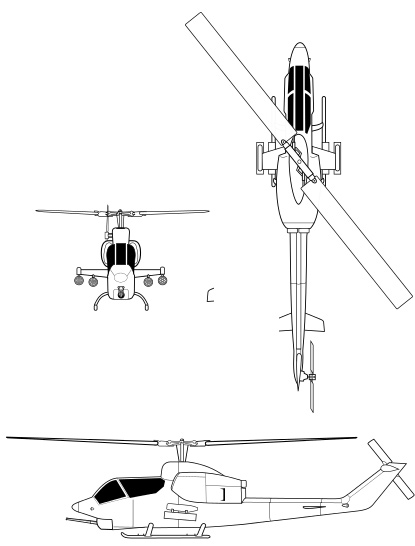
- Crew: two: pilot, co-pilot/gunner (CPG)
- Length: 53 ft 5 in (16.3 m) (with both rotors turning)
- Rotor diameter: 43 ft 11 in (13.4 m)
- Height: 13 ft 5 in (4.1 m)
- Empty weight: 6,610 lb (2,998 kg)
- Max. takeoff weight: 10,000 lb (4,540 kg)
- Total engine output: 1,530 shp (1,125 kW) limited by helicopter drivetrain
- Rotor systems: 2 blades on main rotor, 2 blades on tail rotor
- Fuselage length: 45 ft 9 in (13.5 m)
- Stub wing span: 10 ft 9 in (3.28 m)
- Powerplant: 1 × Pratt & Whitney Canada T400-CP-400 (PT6T-3 Twin-Pac) turboshaft, 1,800 shp (1,342 kW)
Performance
- Never exceed speed: 190 knots (219 mph, 352 km/h)
- Maximum speed: 152 knots (175 mph, 282 km/h)
- Range: 311 nmi (358 mi, 576 km)
- Service ceiling: 10,500 ft (3,215 m)
- Rate of climb: 1,090 ft/min (5.54 m/s)
Armament
- 20 mm (0.787 in) M197 3-barreled Gatling cannon in the M97 turret (750 rounds ammo capacity)
- 2.75 in (70 mm) Mk 40, or Hydra 70 rockets – 14 rockets mounted in a variety of launchers
- 5 in (127 mm) Zuni rockets – 8 rockets in two 4-round LAU-10D/A launchers
- AIM-9 Sidewinder anti-aircraft missiles – 1 mounted on each hardpoint

AH-1W SuperCobra
General Characteristics
- Crew: 2: pilot, co-pilot/gunner (CPG)
- Length: 58 ft (17.7 m) (with both rotors turning)
- Rotor diameter: 48 ft (14.6 m)
- Height: 13 ft 9 in (4.19 m)
- Disc area: 1809 ft² (168.1 m²)
- Empty weight: 10,200 lb (4,630 kg)
- Max. takeoff weight: 14,750 lb (6,690 kg)
- Rotor systems: 2 blades on main rotor, 2 blades on tail rotor
- Fuselage length: 45 ft 7 in (13.9 m)
- Stub wing span: 10 ft 9 in (3.28 m)
- Powerplant: 2 × General Electric T700-401 turboshaft, 1,690 shp (1,300 kW) each
Performance
- Maximum speed: 190 knots (218 mph, 352 km/h)
- Range: 317 nmi (365 mi, 587 km)
- Service ceiling: 12,200 ft (3,720 m)
- Rate of climb: 1,620 ft/min (8.2 m/s)
Armament
- 20 mm (0.787 in) M197 3-barreled Gatling cannon in the A/A49E-7 turret (750 rounds ammo capacity)
- 2.75 in (70 mm) Hydra 70 or APKWS II rockets – Mounted in LAU-68C/A (7 shot) or LAU-61D/A (19 shot) launchers
- 5 in (127 mm) Zuni rockets – 8 rockets in two 4-round LAU-10D/A launchers
- TOW missiles – Up to 8 missiles mounted in two 4-round XM65 missile launchers, one on each outboard hardpoint
- AGM-114 Hellfire missiles – Up to 8 missiles mounted in two 4-round M272 missile launchers, one on each outboard hardpoint
- AIM-9 Sidewinder anti-aircraft missiles – 1 mounted on each outboard hardpoint (total of 2)
Variants
- AH-1J SeaCobra
- Original twin engine version.
- AH-1J International
- Export version of the AH-1J SeaCobra.
- AH-1T Improved SeaCobra
- Improved version with extended tailboom and fuselage and an upgraded transmission and engines.
- AH-1W SuperCobra
- (“Whiskey Cobra”), day/night version with more powerful engines and advanced weapons capability.
- AH-1(4B)W Viper
- “Four-Bladed Whiskey” test version with a four-bladed bearingless composite main rotor based on Bell 680 rotor. A prototype was converted from AH-1T 161022.
- AH-1Z Viper
- A new variant nicknamed “Zulu Cobra”, and developed in conjunction with the UH-1Y Venom for the H-1 upgrade program. The variant includes an upgraded four-blade main rotor and adds the Target Sight System (TSS).
- Bell 309 KingCobra
- Experimental all-weather version based on the AH-1G single-engine and AH-1J twin-engine designs. Two Bell 309s were produced; the first was powered by a PW&C T400-CP-400 Twin-Pac engine set and the second was powered by a Lycoming T-55-L-7C engine.
- CobraVenom
- Proposed version for the United Kingdom.
- AH-1RO Dracula
- Proposed version for Romania.
- AH-1Z King Cobra
- AH-1Z offered for Turkey’s ATAK program; selected for production in 2000, but later canceled when Bell and Turkey could not reach an agreement on production.
- Panha 2091
- Unlicensed Iranian upgrade of AH-1J International.
- IAIO Toufan
- Iranian copy / re-manufactured AH-1J International by Iran Aviation Industries Organization, with locally sourced avionics, and weapons.
AH-64A/D Apache
General Characteristics

- Crew: 2 (pilot, and co-pilot/gunner)
- Length: 58.17 ft (17.73 m) (with both rotors turning)
- Rotor diameter: 48 ft 0 in (14.63 m)
- Height: 12.7 ft (3.87 m)
- Disc area: 1,809.5 ft² (168.11 m²)
- Empty weight: 11,387 lb (5,165 kg)
- Loaded weight: 17,650 lb (8,000 kg)
- Max. takeoff weight: 23,000 lb (10,433 kg)
- Fuselage length: 49 ft 5 in (15.06 m)
- Rotor systems: 4 blade main rotor, 4 blade tail rotor in non-orthogonal alignment
- Powerplant: 2 × General Electric T700-GE-701 turboshafts, 1,690 shp (1,260 kW) [upgraded to T700-GE-701C (for AH-64A/D from 1990), 1,890 shp (1,409 kW)] each
Performance
- Never exceed speed: 197 knots (227 mph, 365 km/h)
- Maximum speed: 158 knots (182 mph, 293 km/h)
- Cruise speed: 143 knots (165 mph, 265 km/h)
- Range: 257 nmi (295 mi, 476 km) with Longbow radar mast
- Combat radius: 260 nmi (300 mi, 480 km)
- Ferry range: 1,024 nmi (1,180 mi, 1,900 km)
- Service ceiling: 21,000 ft (6,400 m) minimum loaded
- Rate of climb: 2,500 ft/min (12.7 m/s)
- Disc loading: 9.80 lb/ft² (47.9 kg/m²)
- Power/mass: 0.18 hp/lb (0.31 kW/kg)
Armament
- Guns: 1× 30 mm (1.18 in) M230 Chain Gun with 1,200 rounds as part of the Area Weapon Subsystem
- Hardpoints: Four pylon stations on the stub wings. Longbows also have a station on each wingtip for an AIM-92 Stinger twin missile pack.
- Rockets: Hydra 70 70 mm, CRV7 70 mm, and APKWS 70 mm air-to-ground rockets
- Missiles: Typically AGM-114 Hellfire variants; AIM-92 Stinger and Spike missiles may also be carried.
Avionics
- Lockheed Martin / Northrop Grumman AN/APG-78 Longbow fire-control radar (Note: can only be mounted on the AH-64D/E)
Variants
AH-64A
The AH-64A is the original production attack helicopter. The crew sit in tandem in an armored compartment. It is powered by two GE T700 turboshaft engines. The A-model was equipped with the ?701 engine version until 1990 when the engines were switched to the more powerful 701C version. U.S. Army AH-64As are being converted to AH-64Ds. The service’s last AH-64A was taken out of service in July 2012 before conversion at Boeing’s facility in Mesa, Arizona. On 25 September 2012, Boeing received a $136.8M contract to remanufacture the last 16 AH-64As into the AH-64D Block II version and this was forecast to be completed by December 2013.
AH-64B
In 1991, after Operation Desert Storm, the AH-64B was a proposed upgrade to 254 AH-64As. The upgrade would have included new rotor blades, a Global Positioning System (GPS), improved navigation systems and new radios. U.S. Congress approved $82M to begin the Apache B upgrade. The B program was canceled in 1992. The radio, navigation, and GPS modifications, were later installed on most A-model Apaches through other upgrades.
AH-64C
Additional funding from Congress in late 1991 resulted in a program to upgrade AH-64As to an AH-64B+ version. More funding changed the plan to upgrade to AH-64C. The C upgrade would include all changes to be included in the Longbow except for mast-mounted radar and newer ?700C engine versions. However, the C designation was dropped after 1993. With AH-64As receiving the newer engine from 1990, the only difference between the C model and the radar-equipped D model was the radar, which could be moved from one aircraft to another; thus the decision was made to simply designate both versions “AH-64D”.
AH-64D
The AH-64D Apache Longbow is equipped with a glass cockpit and advanced sensors, the most noticeable of which being the AN/APG-78 Longbow millimeter-wavefire-control radar (FCR) target acquisition system and the Radar Frequency Interferometer (RFI), housed in a dome located above the main rotor. The radome’s raised position enables target detection while the helicopter is behind obstacles (e.g. terrain, trees or buildings). The AN/APG-78 is capable of simultaneously tracking up to 128 targets and engaging up to 16 at once, an attack can be initiated within 30 seconds. A radio modem integrated with the sensor suite allows data to be shared with ground units and other Apaches; allowing them to fire on targets detected by a single helicopter.
The aircraft is powered by a pair of uprated T700-GE-701C engines. The forward fuselage was expanded to accommodate new systems to improve survivability, navigation, and ‘tactical internet’ communications capabilities. In February 2003, the first Block II Apache was delivered to the U.S. Army, featuring digital communications upgrades. The Japanese Apache AH-64DJP variant is based on the AH-64D; it can be equipped with the AIM-92 Stinger air-to-air missiles for self-defense.
AH-64E
Formerly known as AH-64D Block III, in 2012, it was redesignated as AH-64E Guardian to represent its increased capabilities. The AH-64E features improved digital connectivity, the Joint Tactical Information Distribution System, more powerful T700-GE-701D engines with upgraded face gear transmission to accommodate more power, capability to control unmanned aerial vehicles (UAVs), full IFR capability, and improved landing gear. New composite rotor blades, which successfully completed testing in 2004, increase cruise speed, climb rate, and payload capacity. Deliveries began in November 2011. Full-rate production was approved on 24 October 2012, with 634 AH-64Ds to be upgraded to AH-64E standard and production of 56 new-build AH-64Es to start in 2019/20. Changes in production lots 4 through 6 shall include a cognitive decision aiding system and new self-diagnostic abilities. The updated Longbow radar has an oversea capacity, potentially enabling naval strikes; an AESA radar is under consideration. The E model is to be fit for maritime operations. The Army has expressed a desire to add extended-range fuel tanks to the AH-64E to further increase range and endurance. AH-64Es are to have the L-3 Communications MUM-TX datalink installed in place of two previous counterparts, communicating on C, D, L, and Ku frequency bands to transmit and receive data and video with all Army UAVs. Lots 5 and 6 will be equipped with Link 16 data-links.
AH-64F
In 2014, Boeing conceptualized an Apache upgrade prior to the introduction of the U.S. Army’s anticipated attack version of the Future Vertical Lift aircraft, forecast to replace the Apache by 2040. The conceptual AH-64F would have greater speed via a new 3,000 shp turboshaft engine from the improved turbine engine program, retractable landing gear, stub wings to offload lift from the main rotor during cruise, and a tail rotor that can articulate 90 degrees to provide forward thrust. In October 2016, the Army revealed they would not pursue another Apache upgrade to focus on funding the FVL; the Army will continue buying the Apache through the 2020s until Boeing’s production line ends in 2026, then FVL is slated to come online in 2030.
Sea Apache
During the 1980s naval versions of the AH-64A for the United States Marine Corps and Navy were examined. Multiple concepts were studied with altered landing gear arrangements, improved avionics and weapons. The USMC was very interested and conducted a two-week evaluation of the Apache in September 1981, including shipboard operation tests.
Funding for a naval version was not provided; the Marine Corps continued to use the AH-1. The Canadian Forces Maritime Command also examined a naval Apache. In 2004, British Army AgustaWestland Apaches were deployed upon the Royal Navy’s HMS Ocean, a Landing Platform Helicopter, for suitability testing; there was U.S. interest in the trials.
During the 2011 military intervention in Libya, the British Army extensively used Apaches from HMS Ocean. In 2013, U.S. 36th Combat Aviation Brigade AH-64Ds were tested on a variety of U.S. Navy ships.
Export Apaches
Several models have been derived from both AH-64A and AH-64D for export. The British-built AgustaWestland Apache (assembled from kits purchased from Boeing) is based on the AH-64D Block I with several different systems, including more powerful engines, folding rotor blades, and other modifications for operation from Royal Navy vessels.
Block modification
While a major change in design or role will cause the type designator suffix to change, for example from AH-64D to AH-64E, the helicopters are also subject to block modification. Block modification is the combining of equipment changes into blocks of modification work orders, the modifications in the block (sometimes called a block package) are all done to the helicopter at the same time.
Cutaway
UH-1D Iroquois “Huey”
General Characteristics

- Crew: 1–4
- Capacity: 3,880 lb (1,760 kg) including 14 troops, or 6 stretchers, or equivalent cargo
- Length: 57 ft 1 in (17.40 m) with rotors
- Width: 8 ft 7 in (2.62 m) (Fuselage)
- Height: 14 ft 5 in (4.39 m)
- Empty weight: 5,215 lb (2,365 kg)
- Gross weight: 9,040 lb (4,100 kg)
- Max takeoff weight: 9,500 lb (4,309 kg)
- Powerplant: 1 × Lycoming T53-L-11 turboshaft, 1,100 shp (820 kW)
- Main rotor diameter: 48 ft 0 in (14.63 m)
Performance
- Maximum speed: 135 mph (217 km/h; 117 kn)
- Cruise speed: 125 mph (201 km/h; 109 kn)
- Range: 315 mi (274 nmi; 507 km)
- Service ceiling: 19,390 ft (5,910 m) dependent on factors such as weight, air temperature, etc
- Rate of climb: 1,755 ft/min (8.92 m/s)
- Power/mass: 0.15 hp/lb (0.25 kW/kg)
Armament
- 7.62 mm machine guns
- 2.75 in (70 mm) rocket pods
Variants
U.S. Military variants
- XH-40: The initial Bell 204 prototype. Three prototypes were built, equipped with the Lycoming XT-53-L-1 engine of 700 shp (520 kW).
- YH-40: Six aircraft for evaluation, as XH-40 with 12-inch (300 mm) cabin stretch and other modifications.
- Bell Model 533: One YH-40BF rebuilt as a flight test bed with turbojet engines and wings.
- HU-1A: Initial Bell 204 production model, redesignated as the UH-1A in 1962. 182 built.
- TH-1A: UH-1A with dual controls and blind-flying instruments, 14 conversions.
- XH-1A: A single UH-1A was redesignated for grenade launcher testing in 1960.
- HU-1B: Upgraded HU-1A, various external and rotor improvements. Redesignated UH-1B in 1962. 1014 built plus four prototypes designated YUH-1B.
- NUH-1B: a single test aircraft, serial number 64-18261.
- UH-1C: The UH-1B gunship lacked the power necessary to carry weapons and ammunition and keep up with transport Hueys, and so Bell designed yet another Huey variant, the “UH-1C”, intended strictly for the gunship role. It is an UH-1B with improved engine, modified blades and rotor-head for better performance in the gunship role. 767 built.
- YUH-1D: Seven pre-production prototypes of the UH-1D.
- UH-1D: Initial Bell 205 production model (long fuselage version of the 204). Designed as a troop carrier to replace the CH-34 then in US Army service. 2008 built many later converted to UH-1H standard.
- HH-1D: Army crash rescue variant of UH-1D.
- UH-1E: UH-1B/C for USMC with different avionics and equipment. 192 built.
- NUH-1E: UH-1E configured for testing.
- TH-1E: UH-1C configured for Marine Corps training. Twenty were built in 1965.
- UH-1F: UH-1B/C for USAF with General Electric T58-GE-3 engine of 1,325 shp (988 kW). 120 built.
- TH-1F: Instrument and Rescue Trainer based on the UH-1F for the USAF. 26 built.
- UH-1H: Improved UH-1D with a Lycoming T53-L-13 engine of 1,400 shp (1,000 kW). 5435 built.
- CUH-1H: Canadian Forces designation for the UH-1H utility transport helicopter. Redesignated CH-118. A total of 10 built.
- EH-1H: Twenty-two aircraft converted by installation of AN/ARQ-33 radio intercept and jamming equipment for Project Quick Fix.
- HH-1H: SAR variant for the USAF with rescue hoist. A total of 30 built.
- JUH-1: Five UH-1Hs converted to SOTAS battlefield surveillance configuration with belly-mounted airborne radar.
- TH-1H: Recently modified UH-1Hs for use as basic helicopter flight trainers by the USAF.
- HH-1K: Purpose built SAR variant of the Model 204 for the US Navy with USN avionics and equipment. 27 built.
- TH-1L: Helicopter flight trainer based on the HH-1K for the USN. A total of 45 were built.
- UH-1L: Utility variant of the TH-1L. Eight were built.
- UH-1M: Gunship specific UH-1C upgrade with Lycoming T53-L-13 engine of 1,400 shp (1,000 kW).
- UH-1N: Initial Bell 212 production model, the Bell “Twin Pac” twin-engined Huey powered by Pratt & Whitney Canada T400-CP-400.
- UH-1P: UH-1F variant for USAF for special operations use and attack operations used solely by the USAF 20th Special Operations Squadron, “the Green Hornets”.
- EH-1U: No more than 2 UH-1H aircraft modified for Multiple Target Electronic Warfare System (MULTEWS).
- UH-1V: Aeromedical evacuation, rescue version for the US Army.
- EH-1X: Ten Electronic warfare UH-1Hs converted under “Quick Fix IIA”.
- UH-1Y: Upgraded variant developed from existing upgraded late model UH-1Ns, with additional emphasis on commonality with the AH-1Z.
Note: In U.S. service the G, J, Q, R, S, T, W and Z model designations are used by the AH-1. The UH-1 and AH-1 are considered members of the same H-1 series. The military does not use I (India) or O (Oscar) for aircraft designations to avoid confusion with “one” and “zero” respectively.
Other military variants
- Bell 204: Bell Helicopters company designation, covering aircraft from the XH-40, YH-40 prototypes to the UH-1A, UH-1B, UH-1C, UH-1E, UH-1F, HH-1K, UH-1L, UH-1P and UH-1M production aircraft.
- Agusta-Bell AB 204: Military utility transport helicopter. Built under license in Italy by Agusta.
- Agusta-Bell AB 204AS: Anti-submarine warfare, anti-shipping version of the AB 204 helicopter.
- Fuji-Bell 204B-2: Military utility transport helicopter. Built under license in Japan by Fuji Heavy Industries. Used by the Japan Ground Self-Defense Force under the name Hiyodori.
- Bell 205: Bell Helicopters company designation of the UH-1D and UH-1H helicopters.
- Bell 205A-1: Military utility transport helicopter version, initial version based on the UH-1H.
- Bell 205A-1A: As 205A-1, but with armament hardpoints and military avionics. Produced specifically for Israeli contract.
- Agusta-Bell 205: Military utility transport helicopter. Built under license in Italy by Agusta.
- AIDC UH-1H: Military utility transport helicopter. Built under license in Taiwan by Aerospace Industrial Development Corporation
- Dornier UH-1D: Military utility transport helicopter. Built under license in Germany by Dornier Flugzeugwerke.
- UH-1G: Unofficial name applied locally to at least one armed UH-1H by the Khmer Air Force in Cambodia.
- Fuji-Bell 205A-1: Military utility transport helicopter. Built under licence in Japan by Fuji. Used by the Japanese Ground Self Defense Force under the designation HU-1H.
- UH-1J: An improved Japanese version of the UH-1H built under license in Japan by Fuji Heavy Industries was locally given the designation UH-1J. Among improvements were an Allison T53-L-703 turboshaft engine providing 1,343 kW (1,800 shp), a vibration-reduction system, infrared countermeasures, and a night-vision-goggle (NVG) compatible cockpit.
- Bell 211 Huey Tug With up-rated dynamic system and larger wide chord blades, the Bell 211 was offered for use as the US Army’s prime artillery mover, but not taken up.
- Bell Huey II: A modified and re-engined UH-1H, improvements were an Allison T53-L-703 turboshaft engine providing 1,343 kW (1,800 shp), a vibration-reduction system, infrared countermeasures, and a night-vision-goggle (NVG) compatible cockpit.significantly upgrading its performance, and its cost-effectiveness. Currently offered by Bell in cooperation with the Philippine Air Force to all current military users of the type.
- UH-1/T700 Ultra Huey: Upgraded commercial version, fitted with a 1,400-kW (1900-shp) General Electric T700-GE-701C turboshaft engine.




